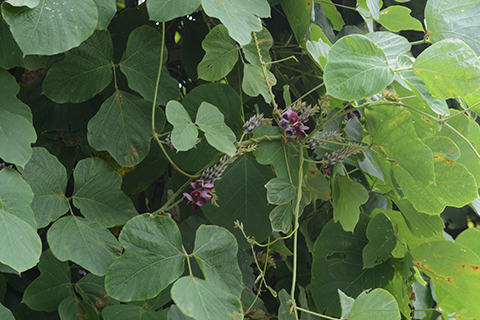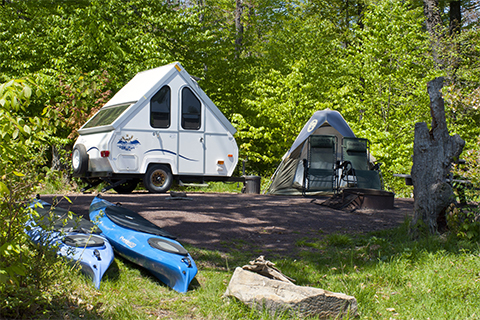Think for a minute about whether you can name an invasive species in Pennsylvania.
The names are becoming familiar to us…emerald ash borer, hydrilla, hemlock woolly adelgid, spotted lanternfly, tree of heaven, northern snakehead. These species are known, but not wanted.
They are among 396 invasive species as of January 2019 in an online database coordinated by the Pennsylvania Natural Heritage Program. The tracked species are considered invasive because they are non-native to the commonwealth, and known to cause harm to the economy, environment, or people.
How Do Invasives Benefit from a Changing Climate?
How climate changes will impact invasive species could vary depending on the region, the species affected, and the particular impacts being felt, but most invasives do well in a changing climate.
We are already seeing some influences of climate change in Pennsylvania.
DCNR’s Climate Change Adaptation and Mitigation Plan (PDF) notes that as the climate changes it will impact habitats.
New invasive species are expected to move into the commonwealth, and those already here could increase in abundance and distribution.
Invasive species already are competitive and persistent, as well as typically hardy and tolerant to changes. They are helped by:
- Warmer and wetter weather conditions that enhance growth of invasive species, which typically leaf-out earlier than native plants in the spring, and also retain their leaves longer into the fall. This extended growing season allows invasives to further their competitive advantage over native species within the same growing space.
- Forests and habitats that already are stressed from climate change impacts.
An Example: Kudzu

Kudzu is a fast-growing, climbing, and crawling perennial vine. It was originally introduced for erosion control and as cattle forage, and is now considered invasive.
It was difficult to find in Pennsylvania 20 years ago. It is now known to be at about 100 sites in Pennsylvania, mostly in small, isolated patches. It is killed off by frost but returns in the spring.
In a warmer, and possibly wetter Pennsylvania, it could potentially explode across our landscape like it has in the Deep South, where it has blanketed and smothered the landscape in some places.
The result is a loss in the variety of species, and collapse of the way all the living things in an area interact with each other and the environment.
What You Can Do

DCNR will be working with partners to review and expand monitoring to ensure that changes in natural communities, species distribution, and populations are detected.
- Build your awareness -- It’s always a good idea to learn more. For a start, check out these online field and visual guides.
- Be on the lookout and report invasives -- Pennsylvania has an online reporting and data management tool used to track invasive species for citizen scientists called iMapInvasives. It includes a public reporting tool.
- Clean your gear, and don’t transport firewood -- Invasives are often hitchhikers. Prevent this by cleaning your boots, boats, and bike tires. Check out these fact sheets to reduce the chance of spreading invasives.
Additional information about how DCNR is helping the commonwealth reduce and adapt to climate change is available at the DCNR website.
DCNR Climate Change and Research Coordinator Greg Czarnecki will be talking about climate change in Pennsylvania and efforts to make the commonwealth more resilient at the upcoming Schuylkill Watershed Congress on Saturday, March 9, and the Pennsylvania Recreation and Park Society annual gathering on Tuesday, April 2.